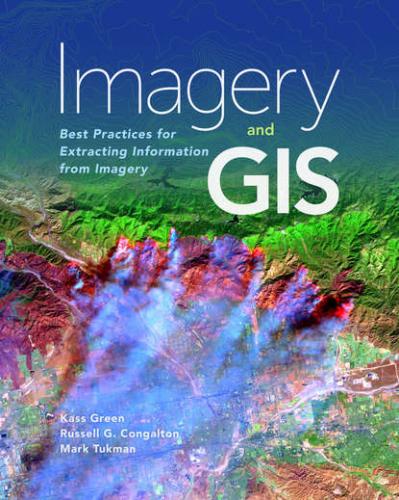USGS EROS Center. A full listing of EROS archive products can be found at https://lta.cr.usgs.gov/products_overview. HVH-resolution panchromatic and multispectral imagery offered for download from EROS are older datasets and include:DigitalGlobe imagery purchased by federal agencies. IKONOS, GeoEye-1, QuickBird, and WorldView-1 to -3 imagery purchased by federal agencies is available to other US federal agency users only, either at no cost or for the cost of a license upgrade. https://lta.cr.usgs.gov/UCDPDigital orthophoto quadrangles in panchromatic, true color, or color infrared with a 1-m spatial resolution. They are available to all users for download at no cost as quarter quadrangles (3.75 minutes) for 48 states and were completed in 2004. USGS also has black-and-white, full 7.5-minute quadrangles for much of Oregon, Washington, and Alaska. https://lta.cr.usgs.gov/DOQsOrbView-3 imagery collected between 2003 and 2007. This 1-meter panchromatic and 4-meter multispectral data is available for download to all users at no cost and without license restrictions.National High Altitude Program (NHAP) black-and-white (1:58,000) and color infrared photographs (1:80,000) of the conterminous United States collected from 1980 to 1989, which can be downloaded as scanned files. They are available to all users at no cost. The photos have not been terrain corrected. https://lta.cr.usgs.gov/NHAPNational Aerial Photography Program (NAPP) photography 1:40,000 black-and-white and color infrared images collected over the 48 conterminous states from 1987 to 2007 and can be downloaded as scanned files. They are available to all users at no cost. The photos have not been terrain corrected. https://lta.cr.usgs.gov/NAPP
USDA APFO. The APFO has a vast amount of aerial photography of the lower 48 states, captured by USDA from 1955 to the present, including the NAIP imagery mentioned above. Until recently, the only way to gain access to its film archive was through requests made to APFO for an aerial photograph to be scanned. However, it is currently scanning much of the film archives. One of the most efficient ways to investigate APFO archive content is through the ArcGIS Online APFO Historical Availability Tile Layer, which lists the type of imagery collected and the year of collection for every county in the 48 conterminous states.
Bureau of Land Management. The location and date of BLM film collections can be researched using the BLM’s interactive map (https://navigator.blm.gov/home). Copies of photos in the archive must be requested from the BLM.
National Archives. This site allows registered researchers to gain access to historical maps and aerial photography. It is a rich resource for historical imagery and maps, going back to the 1930s (https://www.archives.gov/research/order/maps.html).
Declassified intelligence archives. Both the USGS EROS Center and the National Archives and Records Administration maintain archives of more than 990,000 declassified black-and-white CORONA, ARGON, LANYARD, KH-7, and KH-9 satellite reconnaissance film images captured by the United States government worldwide from 1959 to 1980. USGS creates scans of the images on demand for $30.00 per frame. Most of this imagery was collected outside the United States. See https://lta.cr.usgs.gov/declass_1 and https://lta.cr.usgs.gov/declass_2.
Moderate- and Low-Spatial-Resolution Panchromatic and Multispectral Imagery
Table 4.4 summarizes the sources of currently operating panchromatic and multispectral moderate-spatial-resolution systems. Much of this imagery is collected from government satellite systems, and the imagery is usually freely accessible for download, or in the case of Landsat 8 and the USGS Landsat Global Land Survey imagery, is also dynamically served.
USGS EROS
The USGS EROS Center has one of the largest archives of moderate- and low-spatial-resolution imagery because they operate the US National Satellite Land Remote Sensing Archive, which includes the global Landsat archives as well as those for Advanced Very High Resolution Radiometer (AVHRR), Advanced Spaceborne Thermal Emission and Reflection Radiometer (ASTER), and other satellite systems. They also distribute the ESA Sentinel-2 imagery. Moderate- and low-spatial-resolution imagery available from EROS includes:
All Landsat imagery from 1972 to the present. The archive distributes more than 7,000 terabytes of Landsat imagery annually. Starting with Landsat 1 (launched in 1972) with four bands (G, R, 2 IR) at 80-m spatial resolution, the Landsat constellation of satellites has evolved to the Landsat 8 system (launched in 2013) with 10 bands at 15-m (panchromatic); 30-m (visible, near-infrared, and short-wave infrared); and 100-m (thermal) spatial resolution. No other remote sensing system provides a 40+ year continuous record of global observations. Landsat 9 is currently under construction and will be identical to Landsat 8 with a planned launch date in the early 2020s.
Figure 4.4. Comparison of the spectral resolutions of Landsats 7 and 8, Moderate Resolution Imaging Spectroradiometer (MODIS), and Sentinel-2. Source: USGS
ESA Sentinel-2 imagery. Sentinel-2A was launched in June 2015 with 13 bands in the visible (10-m resolution), near-infrared (10 to 20-m resolution), and short-wave infrared bands (20 to 60-m resolution). The spectral resolution is very similar to Landsat’s (figure 4.4) An identical satellite, Sentinel-2B launched in March of 2017. In a partnership with ESA, EROS distributes Sentinel-2 level 1C imagery.
AVHRR imagery from 1979 to the present at a 1-km spatial resolution. AVHRR 1.1-km imagery is captured worldwide twice every day and has been collected by NOAA’s polar-orbiting satellites from 1979 to the present.
Multispectral data over the United States acquired by SPOT-4 and -5 satellites. This dataset of licensed commercial imagery is available only to US civil government agencies (2010 to 2013).
The SPOT Controlled Image Base is an orthorectified product derived from panchromatic images with a 10-m ground sample distance. Coverage is limited to portions of the United States, Europe, Middle East, Southeast Asia, North and South Korea, Central America, western Russia, and other smaller areas around the world (1986 to 1993).
ASTER is one of a number of instruments on board the Terra platform, which was launched in December 1999. ASTER provides 14 spectral bands with 15- to 90-meter resolutions depending on the bands. ASTER does not acquire data continuously; its sensors are activated only to collect specific scenes upon request. The instrument consists of three separate telescopes; each provides a different spectral range and resolution. The visible and near-infrared sensor provides four bands at a 15-meter
